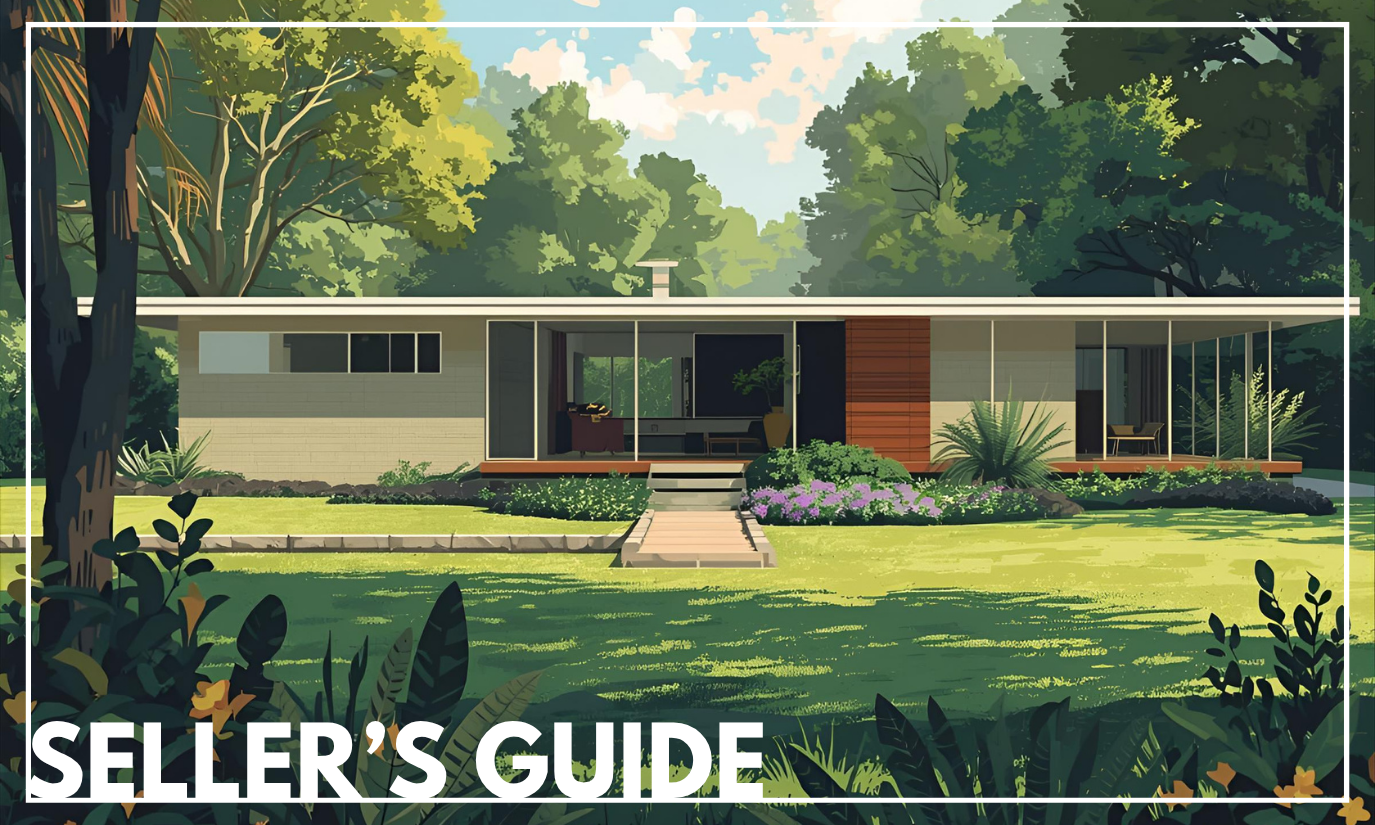Mid-Century Modern vs. New Construction: The Surprising Similarities - and the Size Gap They Solve
Walk into any newly built contemporary or transitional style home in the DC region today and you’ll notice an unmistakable theme: clean lines, open sightlines, large windows, and a seamless blend of indoor and outdoor living. These elements feel fresh, contemporary, and aligned with what modern buyers want, but they aren’t new. They’re Mid-Century Modern ideas, reborn.
In fact, many of the most popular trends in today’s new construction can be traced directly back to the Modernist movement of the 1940s–1970s. The very concepts that define “modern luxury” today were foundational principles of Mid-Century Modern architects across the DMV, from Hollin Hills to Carderock Springs, Rock Creek Woods, Pine Spring, Holmes Run Acres, and beyond.
Mid-Century Modern homes aren’t just relics of the past. They are the original blueprint for the design trends shaping new construction today.
Clean, Simple Lines: Yesterday’s Vision, Today’s Aesthetic
Modern new construction homes frequently emphasize simplicity - straightforward forms, unadorned surfaces, minimal ornamentation, and balanced geometry. Developers market these details as “sleek and modern,” but they are hallmarks of the Mid-Century Modern ethos.
Architects like Charles Goodman, Keyes Lethbridge & Condon (KLC), and other regional modernists believed that form should follow function. Their homes prioritized simplicity not as a style choice, but as a philosophy: strip away what’s unnecessary so the home can breathe and the homeowners can live with clarity and ease.
Today’s buyers gravitate toward this exact mindset, though they may not realize they’re drawn to a 70-year-old design language.
Walls of Glass & Light-Filled Interiors
Large windows, clerestories, sliding glass doors, and expansive glazing are some of the most coveted features in today’s new homes. Builders highlight “abundant natural light,” “airy interiors,” and “indoor-outdoor flow” as major selling points.
MCM atrium courtesy of Dwell
Again - this is pure MCM.
Mid-Century Modern architects pioneered the idea that windows are walls. They wanted sunlight to be part of the architecture. They designed homes to sit gently on their lots, oriented for sun exposure, nature views, and privacy through landscaping rather than heavy drapery or window coverings.
Today’s new homes echo this philosophy closely… often at three times the size.
Organic Connection to Nature
One of the most enduring elements of Mid-Century Modern architecture is the seamless integration of the house with the landscape. Decks, patios, courtyards, natural materials, and thoughtful site placement blur the boundaries between the built environment and the natural world.
This inside-outside harmony is now a primary selling feature of new construction - but MCM homes perfected it first.
With climate consciousness on the rise and buyers prioritizing well-being, the MCM approach feels more relevant than ever.
Where the Two Diverge: Size, Scale & Practical Living
New construction home courtesy of Medina Custom Homes
While today’s new construction borrows heavily from the MCM aesthetic, one major difference stands out in the DC area:
Size.
Most new single-family homes built in the region are 5,000 square feet and up, driven by economics—developers need to maximize profit on infill lots, and building larger yields greater returns. This practice has heavily contributed to the rise of the term “the missing middle”, while provoking much discussion and political division around the subject.
But what about buyers who want a modern lifestyle without a massive footprint? That’s where Mid-Century Modern homes shine.
Mid-Century Modern Homes Fill the Missing Middle
Many MCM homes in the DC region fall between 1,000 and 3,500 square feet - a size range dramatically underserved by today’s builders. Homes in neighborhoods like Carderock Springs, Hollin Hills, and Holmes Run Acres offer:
Courtesy of Decorilla
The modern design language buyers want
Manageable, efficient footprints
Layouts designed for real living, not excess
A strong sense of connection to the natural landscape
Typically priced between $750,000 and $1,500,000
(around the DC metro area)
There is a genuine “missing middle” of new homes between 2,500 and 5,000 square feet - and Mid-Century Modern communities naturally fill that gap.
Even more impressive, some original MCM models are under 1,000 square feet, ideal for anyone seeking a minimalist or tiny-home-inspired lifestyle without sacrificing good design (an example).
Upcycling Architecture: A Sustainable Alternative to New Construction
A growing number of buyers are looking beyond new construction for environmental reasons. Building a new home - even a highly efficient one - requires enormous material and energy resources. By contrast, restoring, renovating, or “upcycling” a Mid-Century Modern home is significantly more sustainable.
It’s the architectural version of choosing vintage over fast fashion:
Better for the world, better for the soul, and often better for your budget.
And sustainability was built into MCM philosophy long before it became a buzzword. These homes were designed to work with the site, sun, and seasons. Large overhangs, natural cross-ventilation, modest footprints, and thoughtful placement are all inherently eco-friendly principles.
Design Forward, Right-Sized, and Surprisingly Modern
Reimagined MCM home courtesy of 360Modern
For buyers wanting clean lines, floor-to-ceiling windows, open spaces, and connection to nature - but not a sprawling new 6,000-square-foot house - Mid-Century Modern homes are the perfect alternative.
They offer:
Iconic design
Timeless architecture
Environmentally conscious living
A footprint that feels intentional, not excessive
This unique combination explains why MCM homes remain some of the most sought-after properties in the DC area. They provide all the beauty of modern construction with a more practical, sustainable, and emotionally grounded way of living.
Mid-Century Modern Design Isn’t Vintage - It’s Eternal
The resurgence of Mid-Century Modern design proves that the movement was never a trend. It was a foundational architectural philosophy that continues to resonate with how we want to live today: connected, simplified, purposeful, and surrounded by light.
Whether you’re searching for your first MCM home, planning a sensitive renovation, or preparing to sell, Mid-Century Modern architecture offers something that new construction often cannot:
Design integrity paired with a right-sized lifestyle, a home that feels grounded in nature, and a living experience that is both modern and thoughtful.
Intrigued? Explore DC area mid-century modern homes for sale here.







